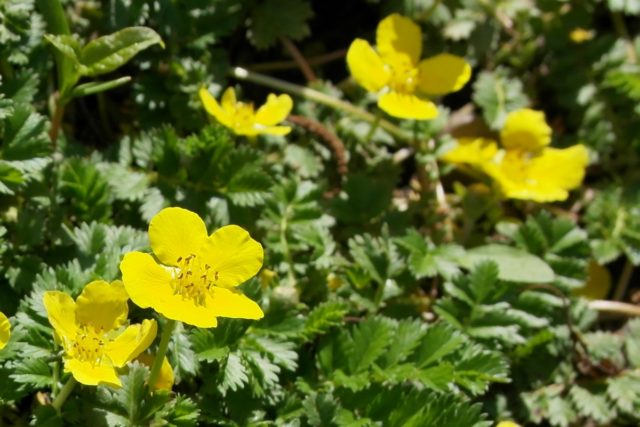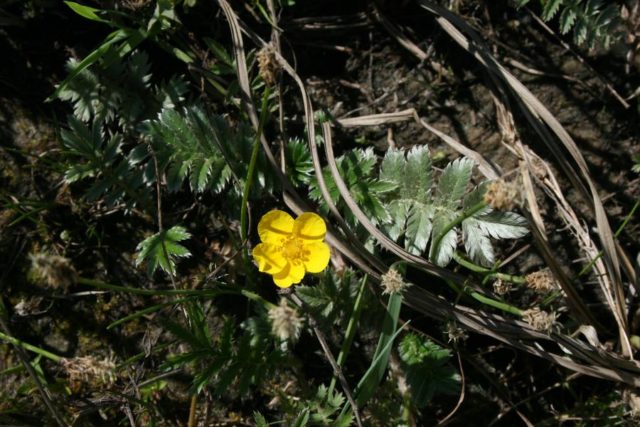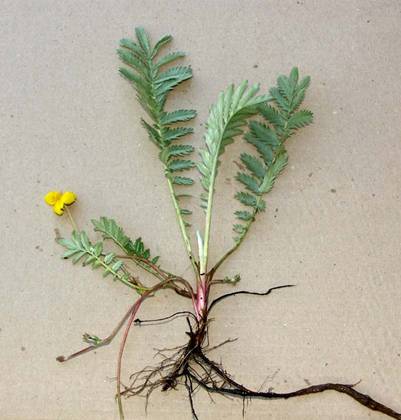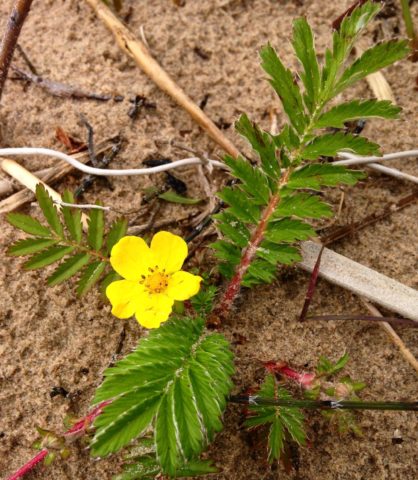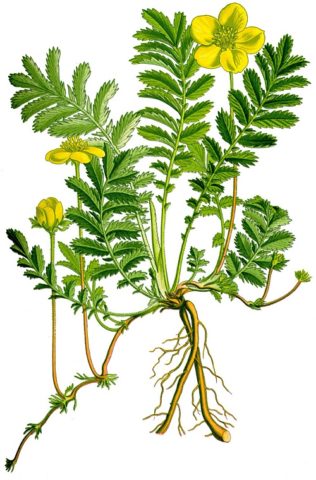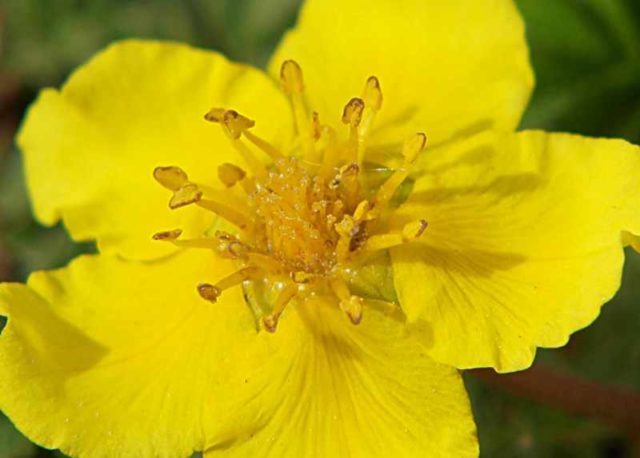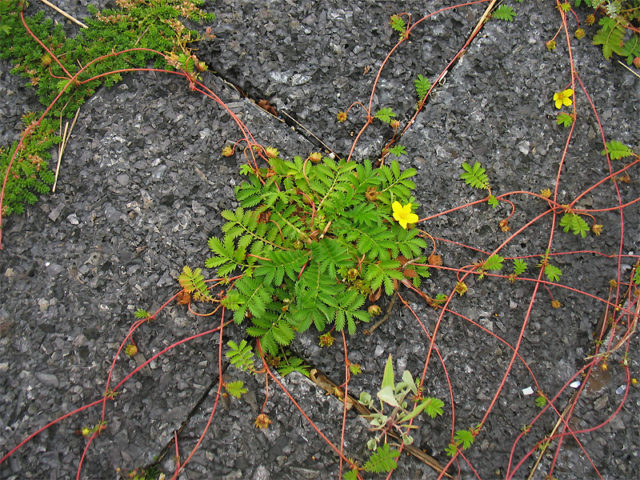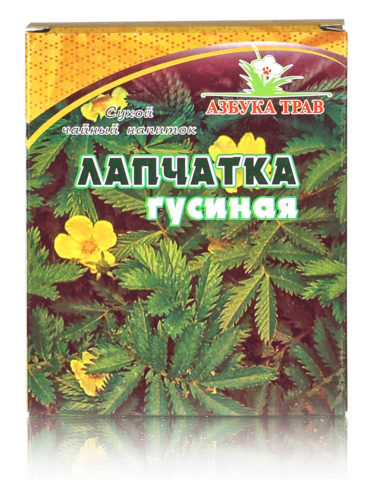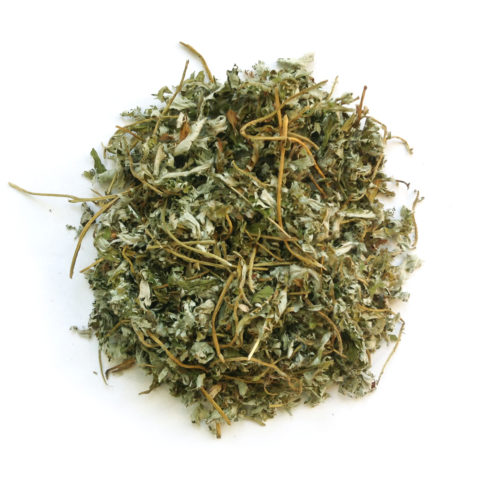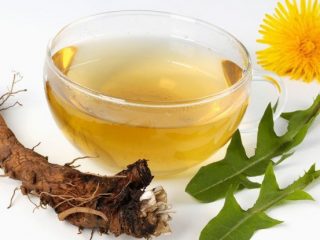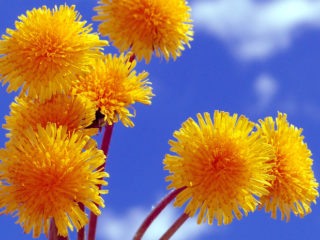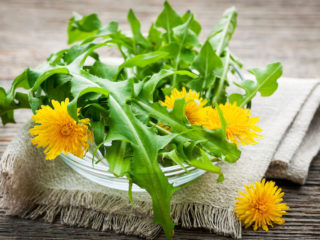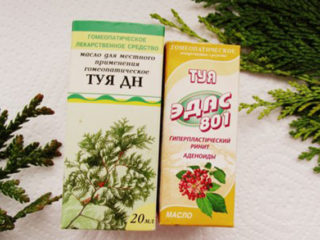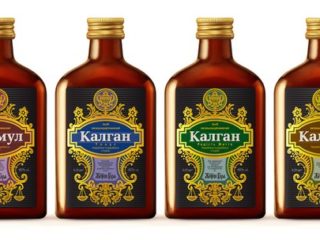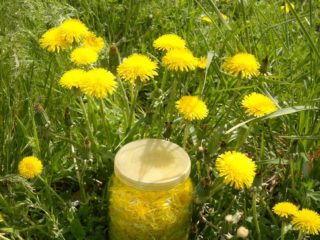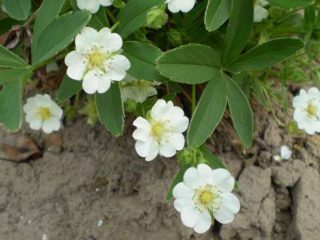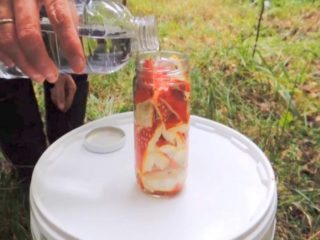Content
- 1 What does cinquefoil look like?
- 2 Where does cinquefoil grow?
- 3 The structure of the cinquefoil anseri
- 4 How does cinquefoil goose reproduce?
- 5 Medicinal properties of Potentilla anserina and contraindications
- 6 Collection and procurement of raw materials
- 7 Use of Potentilla anserina
- 8 Conclusion
- 9 Reviews of Potentilla anserina
Potentilla goose is considered a unique plant, which is actively used in folk medicine to treat a large number of diseases. The plant not only has antiviral properties, but can also stop bleeding if necessary. Today, cinquefoil has found application not only in folk medicine, but also in scientific medicine, as a biologically active agent suitable for external and internal use. In order to collect and further store a plant, it is worth understanding exactly what it looks like, for what purposes it can be used and what contraindications there are for use.
What does cinquefoil look like?
Potentilla goosefoot or goosefoot, as it is also popularly called, is a perennial herbaceous plant that belongs to the Rosaceae family.In addition, it is worth taking into account the fact that a culture may have other names, for example:
- convulsive grass;
- Martin's hand;
- toad picker;
- Dubrovka goose.
If we consider the appearance of the cinquefoil goose, it is worth noting that it has a fairly thick and multi-headed rhizome, creeping rooting stems, the length of which can reach 70 cm. In some places, thin tendrils may extend from the stems, which in turn take root in the ground. The leaves are basal, intermittently pinnate, and can include from 9 to 20 leaflets. The leaf blade has a green tint on top, silver-white-felt underneath, and the leaves feel velvety to the touch.
The stem leaves located in the lower part of the plant are short-petioled, in the upper part they are reduced, and there are a small number of them. Shoots, as a rule, emerge from leaf axils, on which flowers consisting of 5 petals are located singly. During the flowering period, flowers of a rich golden-yellow hue appear on the crop; the calyx is double, containing pistils and stamens. A distinctive feature is the rather pleasant smell that the plants emit. The flowering period lasts from May to the end of August.
Where does cinquefoil grow?
In order to collect cinquefoil, it is important to understand not only what it looks like so that it can be distinguished from other varieties of herbs, but also the places in which the crop grows. This type of grass is considered a Eurasian plant species. That is why galangal is widespread throughout European territory. If necessary, the culture can be found in the Caucasus and Asia.In Russia it grows throughout the European part.
A large amount of grass can be found in Polesie; in addition, harvesting can be done in the Urals, Siberia, right up to the Altai Territory. Potentilla goose grows well not only on sandy soil, but also in swampy places. It requires plenty of sunlight and heat to grow.
The structure of the cinquefoil anseri
Many recommend first studying the photo and description of the cinquefoil gossamer, and then proceeding to a detailed examination of the structure of the culture. In order to understand exactly how to distinguish a plant from other varieties and varieties, it is important to understand what each individual part looks like and what beneficial properties it has. A distinctive feature is the rather large buds, which exude a strong and at the same time pleasant aroma.
What type of cinquefoil rhizome does it look like?
If we consider the appearance of the rhizome of the cinquefoil, it is worth noting that the root system is woody, has a cylindrical shape, thickening is observed in places, but it is uneven, which is also worth taking into account. The root of the cinquefoil is small in size, quite short if you dig it up completely. In addition, the rhizome contains a large number of biologically active substances, among which are:
- tannins;
- sugar;4
- flavonoids;
- starch;
- essential oils;
- resin;
- tormentillin glycoside;
- wax;
- red phlobafen pigment;
- gum;
- tormenthol ether;
- phlobafens;
- quinic acid;
- ellagic acid.
The root system of the cinquefoil has found wide application, as a result of which it is used not only in folk medicine to prepare decoctions against various diseases, but is also added to paint to obtain the desired shade, and is used in cooking as a spice.
Stem of Potentilla anserina
As practice shows, Potentilla anseri belongs to the Rosaceae family. This crop is a herbaceous perennial plant. A distinctive feature is the creeping stem, the length of which can vary from 10 to 15 cm. If we consider the appearance of the stems, it is noticeable that they are slightly raised upward, in addition, they have an arched shape. It is important to take into account the fact that the stems, as well as the pedicels with cuttings, are covered with felt, which has a gray or white tint. In addition, there may be small amounts of hair on the surface. The tendrils of the cinquefoil extend from the stems and then take root.
Leaves and leaf arrangement of Potentilla anserina
The cinquefoil has intermittent leaves, and they are imparipinnate. The lower part of the leaf plate is silver-white felt. In the lower part of the plant there are leaves, which are closer to the root system and have fairly long petioles, grouped by approximately 6-7 leaves. In the central part of the stem and on the upper part of the leaf there are about 4 leaves, which have an obovate shape and a narrow wedge-shaped base. As a rule, the top of each leaf has 2-5 cloves. The upper part of the leaf blade is bare or has rather long and sparse hairs.The bottom of the leaves are all covered with white felt and painted in a silvery tint.
Potentilla anserina flower and inflorescence
During the flowering period, the cinquefoil has flowers of a rich yellow color. If you look closely at the culture, you will notice that the buds grow the same size, while they are quite large, which distinguishes this species from other existing varieties. The flowers emerge from the axils of the leaves of creeping shoots, the height of which varies from 10 to 20 cm. If we consider the appearance of the outer sepals, it is worth noting that they are incised, the same in length, and have a fairly wide ovoid shape. In cinquefoil flowers, the petals are from 7 to 10 mm long, the sepals are several times longer. The number of stamens is about 20-25, the filaments are short.
What is in the nodes of Potentilla anseri?
Potentilla goose is a plant that densely covers the territory in which it grows, resulting in a continuous carpet of rich green hue. During the growth of nodes, the process of rooting of fairly strong creeping stems takes place, the length of which can vary from 20 to 80 cm. These shoots, as a rule, emerge from the leaf axils.
During strong gusts of wind, the leaf blade turns with the bottom up, resulting in a feeling as if silvery waves are running across a carpet of cinquefoil. That is why people quite often hear the culture being called silver grass or silver-plated grass.
How does cinquefoil goose reproduce?
As mentioned above, cinquefoil is a perennial plant.In the first year of life of the crop, above-ground leaf rosettes begin to form from the seeds. After the plant is 2 years old or more, the cinquefoil anseri begins to reproduce. In this case, it is important to understand that a plant can reproduce in several ways. Thus, the vegetative method involves propagation using above-ground rooted shoots. The second method is called sexual and involves reproduction using seeds.
However, it is worth taking into account the fact that the seed method is a secondary method for cinquefoil, since the culture takes root quite well due to the presence of creeping above-ground shoots, as well as by cutting off root tubers. Thanks to vegetative propagation, Potentilla anseri is capable of forming quite dense thickets during the growth process.
Medicinal properties of Potentilla anserina and contraindications
Since cinquefoil is a herb with medicinal properties, it is actively used in folk medicine. It is worth noting that the plant has the following properties:
- anticonvulsants;
- painkillers;
- diuretic;
- hemostatic;
- wound healing;
- astringents;
- improve metabolism.
Due to the presence of astringent properties, cinquefoil is actively used in the fight against diarrhea, against bleeding, and mucous secretions. Since ancient times, infusions have been actively used for rinsing the mouth if there is bleeding gums or cracks in the tongue.
As practice shows, there are few contraindications for use.Herbal decoctions are not recommended for use by people with thickened blood, colitis with atonic constipation. Also, medications should be taken as carefully as possible in cases where you plan to remove kidney stones. This is primarily due to the fact that stones can quite easily get stuck in the ureter.
Collection and procurement of raw materials
Since cinquefoil has beneficial properties and is actively used in medicine, many people collect plants for further storage and use. As practice shows, all parts of the crop can be used, including grass, flowers and seeds. It is recommended to start harvesting at the moment when the flowering period begins, that is, from the beginning of May and lasts until the end of August. In order to dry the collected grass, you must use a special dryer; in addition, the place must be dark and well ventilated.
You can start collecting seeds after the fruits are fully ripe, namely in the second half of August. The root system can be dug up in early spring or autumn, only after the above-ground part has dried. If dried herbs are stored correctly, the medicinal properties can be preserved for several years.
Use of Potentilla anserina
Before you start taking infusions, you should not only study the contraindications of cinquefoil, but also understand for what diseases what should be used.
Thus, tea based on Potentilla anserina should be consumed for diseases associated with housing and communal services, menstruation, ailments, and cramps in the lower part of the body.
Decoctions and infusions are perfect for dysentery, diarrhea, kidney stones, tumors, hernia, gastritis, stomach ulcers, severe pain in the abdominal area. Also taken externally for sore throat, ointments are used for cracked lips.
The juice of the plant is used as a lotion for open wounds. During toothache, you can rinse your mouth, which helps strengthen the gums and eliminate ulcers and bleeding wounds. Perfectly helps to cope with inflammatory processes in the oral cavity.
In addition, many traditional healers strongly recommend using cinquefoil anserinosa in the presence of tuberculosis and a prolapsed uterus. As practice shows, decoctions are most often prepared from parts of the plant.
Conclusion
Cinquefoil is a plant whose beneficial properties are simply undeniable. Due to the presence of healing properties, the plant is actively used in folk medicine to treat many diseases, which is why this remedy can be considered universal. If necessary, you can assemble and prepare raw materials yourself or purchase them at a pharmacy.
